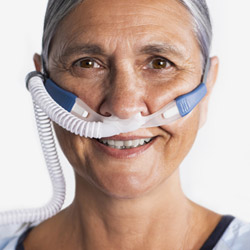Optiflow nasal high flow delivers respiratory support to your patients, by providing heated, humidified air and oxygen at flow rates up to 70 L/min through the unique Optiflow nasal cannula and delivered by a device such as the Airvo 2 or Airvo 3 high flow system.
Check out the high flow Micro Moments series on the Education Hub.
Learn more about high flow therapy including; how to set up nasal high flow, how it works and why the therapy is so versatile – with F&P Micro Moments on the Education Hub
Check out the first episode below.
We’ve created a table that will help you review the guidelines by patient population and application.
Explore our frequently asked questions regarding:
1. Clinical practice/implementation of NHF therapy.
2. Published evidence - the science of high-flow therapy, including the mechanisms of action and patient outcomes.
There are several ways to deliver/get the benefits of Optiflow nasal high flow therapy.
See the images below and for more details download our equipment guide.
The following figure demonstrates what is required for an Airvo Optiflow system.
For high-flow therapy, you need a comfortable interface that stays in place to ensure continuity of treatment.

Latest NHF interface
DPM-1257